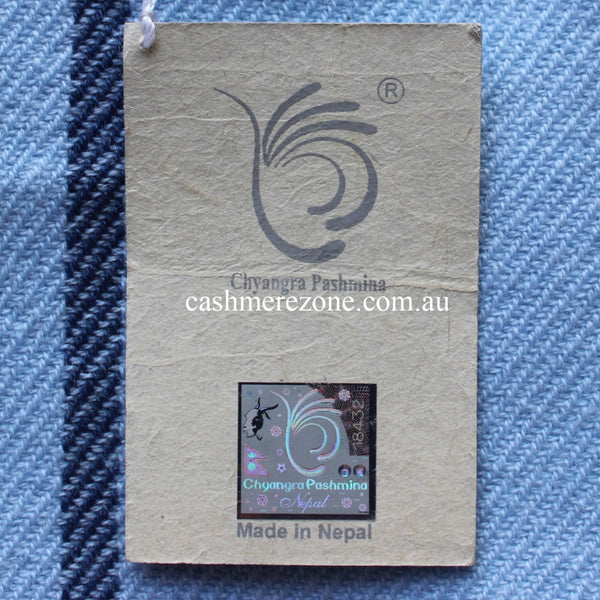7 Tests For Real Pashmina
It’s an unfortunate fact that there are people out there who, knowingly or not, try to sell fake pashmina at the same price as real pashmina, and in fact there are a lot of people who don’t even know the difference.
The first thing to know is that pashmina and cashmere essentially mean the same thing: pashm is the local word for the wool, and the fabric made from it is pashmina, but in the Western world it’s often called ‘cashmere’, because it was exported from Kashmir.
So if something is described as cashmere or pashmina, it might be what you’re looking for.
 Luckily, there are other tests to be sure you’re buying quality fabric rather than an item made from synthetic fabrics like viscose, or even non-pashmina fabrics like cotton. Keep the following in mind, and you should never be fooled!
Luckily, there are other tests to be sure you’re buying quality fabric rather than an item made from synthetic fabrics like viscose, or even non-pashmina fabrics like cotton. Keep the following in mind, and you should never be fooled!
- Because people are vague about whether cashmere and pashmina are the same thing, some people will use the word ‘pashmina’ to just mean a shawl. You should check what the alleged pashmina is made of, and 100% cashmere is what you’re looking for. That’s the term best recognised internationally; pashmina is not a registered fabric. If it’s at all unclear, ask questions about the origin of the fabric. Cashmere is the wool of Himalayan-raised goats who grow thick wool to cope with the climate.
- Check the diameter of the fibres. If it’s really pashmina fabric, the individual fibres should be just 15-19 microns in diameter – much thinner than a human hair. The lower the micron count, the better the quality of the product: it’s fibre diameters of less than 19 microns that create the light, soft, distinctive feel of cashmere.
- The weave will be uneven. Cashmere wool is so delicate that it has to be spun by hand. So if you look at the weave, you can tell whether it’s been done by machine or by a person: only a machine can get an absolutely even weave throughout a piece of fabric. A human will always create irregularities in the fabric, and this is why pashmina is so valuable: it has to be handworked.
- Use common sense. If someone is selling pashmina fabric at far below market rates, it’s too good to be true. There’s no way they would be making a profit if they were selling an authentic product. The larger the fabric and the finer the quality, the more expensive it should be.
- Rub the fabric. This might sound odd, and you have to know what you’re looking for, but rubbing the fabric will tell you if it’s really made of animal fibres or not. Synthetic fabrics like acrylic and polyester create a lot of static electricity when rubbed together like that, and if you watch carefully little sparks will be generated, and dust will be attracted to the synthetic fibres.
- Check for pilling. It can be a nuisance when you want something to look at its best, but pilling is inevitable with an animal fibre product like pashmina. If you can’t see any pilling, it’s very likely to be some kind of synthetic product.
- Is there a label glued to it? No one is going to glue a label to an authentic pashmina. It always comes off far too easily, and it doesn’t suit the luxuriousness of the authentic fabric.
There is one more test you can do if you need to be really sure, but this involves burning part of the pashmina. You don’t need much: just a tiny scrap of fringe would do.
Obviously you should be careful with using this method: you can’t go burning pashmina in a shop or at a stall to prove whether it’s real or not! But if you do need to check, then take a tiny sample of the fabric from somewhere that won’t be noticed, and burn it.
Pay attention to how it smells and looks. Real pashmina will burn with a burnt hair smell, and leave a powdery residue behind.
Viscose smells more like burnt leaves, and burns more brightly, and polyester and acrylic smell like burning plastic and leave a small lump behind.
Click here for the pashmina test videos.
The burnt hair smell tells you that just like your own hair, the fabric is made of a protein called keratin, which is produced by living creatures.
